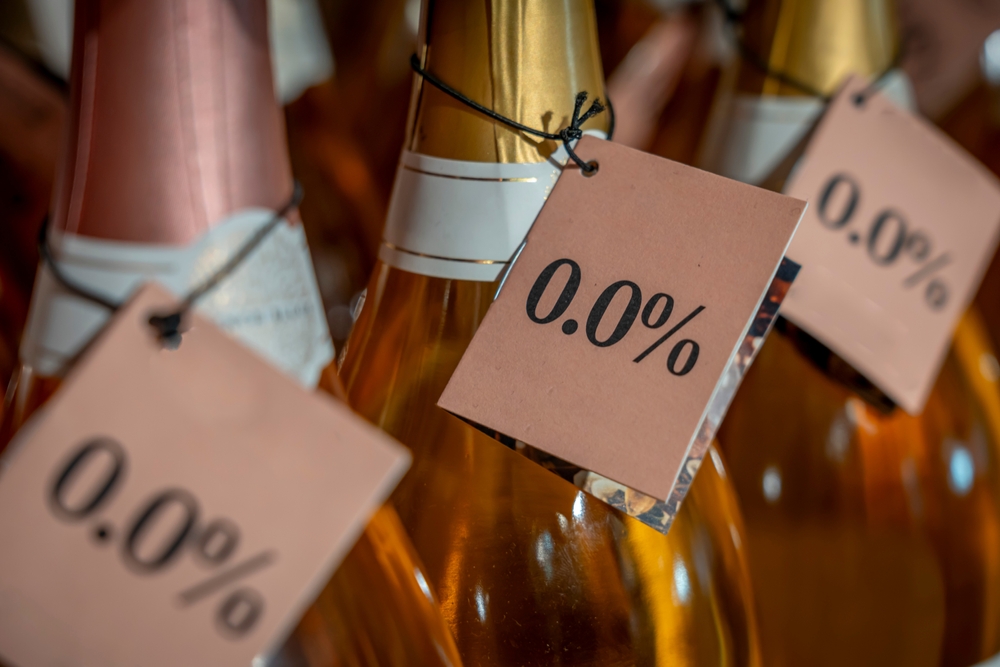Exploring the Rise of Alcohol-Free Wines
Table of contents

The Growing Popularity of Alcohol-Free Wines
In recent years, the rise of alcohol-free wines has become a notable trend within the beverage industry. With more consumers seeking healthier lifestyle choices, the demand for non-alcoholic options has surged. Alcohol-free wines offer a sophisticated alternative to traditional wines, appealing to those who desire the complex flavors and aromas of wine without the effects of alcohol. This trend is not only reshaping consumer habits but also driving innovation within the wine market.
The rise of alcohol-free wines is heavily influenced by health-conscious consumers who are mindful of their alcohol intake. With increased awareness of the health risks associated with alcohol consumption, many individuals are turning to alcohol-free alternatives to enjoy the social and sensory experience without compromising their well-being. This shift is particularly evident among millennials and Gen Z, who are more inclined to prioritize health and wellness in their lifestyle choices.
Moreover, the global pandemic has accelerated this trend, as many individuals have reassessed their drinking habits while spending more time at home. This change in behavior has led to a greater interest in alcohol-free wines as consumers look for ways to enjoy their favorite beverages more responsibly.
The production of these wines involves a delicate process of removing alcohol while preserving the original flavors and aromas. This allows producers to maintain the quality and authenticity of the wine, ensuring that even the most discerning palates are satisfied.
Innovations in Alcohol-Free Wine Production
The surge in demand for alcohol-free wines has prompted wineries to invest in innovative production techniques. Traditional methods of de-alcoholization, such as vacuum distillation and reverse osmosis, have been refined to enhance the quality of alcohol-free wines. These techniques help retain the wine’s character, aroma, and taste, making them increasingly popular among consumers.
Vacuum distillation is a process where wine is heated at a lower pressure to remove alcohol, minimizing any alteration to its flavor profile. This method is particularly effective in preserving the wine’s aromatic compounds, which are essential for its bouquet and taste.
On the other hand, reverse osmosis involves filtering wine through a membrane that separates water and alcohol from the rest of the wine. This technique allows winemakers to gently remove alcohol while maintaining the wine’s original flavor.
The innovations in alcohol-free wine production have led to a wider variety of high-quality products on the market. Consumers can now find alcohol-free wines that mimic the taste and texture of their alcoholic counterparts, staying true to the essence of traditional winemaking.
Market Demand and Consumer Preferences
The rise of alcohol-free wines is driven by shifting consumer preferences and a growing market demand for non-alcoholic beverages. As more people adopt mindful drinking habits, the need for sophisticated non-alcoholic options has become apparent. Alcohol-free wines offer a versatile choice for various occasions, from casual dinners to celebratory events.
Consumers today are more informed than ever, making choices that align with their personal values and health goals. The trend towards alcohol-free wines aligns with broader societal shifts towards wellness and sustainability, as individuals seek products that are not only better for their health but also environmentally friendly.
This trend is also supported by the hospitality industry, with many bars and restaurants expanding their offerings to include alcohol-free options. By providing a diverse range of choices, establishments cater to a broader audience, enhancing their appeal and competitiveness.
The market for alcohol-free wines is expected to continue growing, driven by the increasing popularity of health-oriented lifestyles and the desire for inclusivity in social situations where alcohol consumption is prevalent.
The Future of Alcohol-Free Wines
The future of alcohol-free wines looks promising, with further advancements in production technologies and a growing acceptance among consumers. As the industry continues to innovate, we can expect to see an even wider variety of high-quality alcohol-free wines becoming available.
Wineries are likely to explore more sustainable and eco-friendly production methods, further aligning with consumer values. Additionally, the expansion of distribution networks will make alcohol-free wines more accessible to a global audience.
The rise of alcohol-free wines also presents an opportunity for new businesses and entrepreneurs to enter the market, bringing fresh ideas and products to consumers. As more people continue to embrace this trend, the industry will likely see increased investment and research, driving further growth and development.
The future of alcohol-free wines will likely be characterized by greater diversity in terms of flavor profiles, styles, and packaging, catering to a wide range of consumer preferences and occasions.
Conclusion
The rise of alcohol-free wines marks a significant shift in consumer preferences and the beverage industry as a whole. With health-conscious lifestyles becoming more prevalent, these wines offer an appealing alternative to traditional alcoholic drinks. Innovations in production and a growing market demand are helping to establish alcohol-free wines as a staple in the beverage industry. As this trend continues to evolve, alcohol-free wines will likely gain further popularity, offering consumers a wider range of choices that align with their health and lifestyle goals.
FAQs about Alcohol-Free Wines
1. **What are alcohol-free wines made of?**
Alcohol-free wines are made from traditional wine grapes. The alcohol is removed through processes like vacuum distillation or reverse osmosis, retaining the wine’s flavors.
2. **Do alcohol-free wines taste the same as regular wines?**
Many alcohol-free wines are crafted to closely mimic the flavors and aromas of alcoholic wines, although some nuances may differ due to the removal process.
3. **Are alcohol-free wines healthier than regular wines?**
Alcohol-free wines lower the risk associated with alcohol consumption, making them a healthier choice for those mindful of their intake.
4. **Can I find alcohol-free wines in most wine stores?**
The availability of alcohol-free wines varies, but their growing popularity means they are stocked in an increasing number of retailers worldwide.
5. **Who are the main consumers of alcohol-free wines?**
Health-conscious individuals, including millennials and Gen Z, are the primary consumers, along with those who prefer non-alcoholic options for personal or health reasons.








